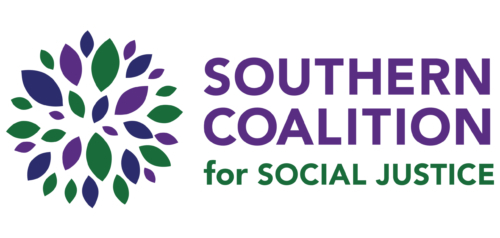Last week, North Carolina House Bill 2 became law and now, according to proponents of the bill, we can all breathe a little easier knowing that our children are safe to use the restroom. Well, that is, unless the child is transgender. HB 2’s reach extends far beyond its restroom provision, but the intentional targeting of transgender individuals has particularly important implications for the safety and wellbeing of transgender students. In 2013, it was estimated that there were 15,600 transgender youth (ages 13-19) living in North Carolina. Those children will find themselves forced to use public restrooms, including school restrooms, that align with their biological sex instead of their gender identify, regardless of how unsafe and unwelcome this may make them feel.
Legislators asserted that HB 2 will protect women and girls from biological men who may enter the women’s restroom with malicious intent. However, like so many laws that have come before, HB 2 uses the rhetoric of safety and security to implement policies that will ultimately harm youth, particularly public school students. This tradition can be traced back to the draconian school discipline policies of the early 2000s that embraced a zero-tolerance approach and an increased reliance on police rather than teachers and administrators to address student misbehavior. The result of these policies is a massive school-to-prison pipeline which funnels students out of school and into the juvenile and adult court systems.
The pipeline disproportionately impacts certain groups of youth, including youth of color, youth with disabilities, and LGBTQ youth. Research shows that LGBTQ youth of color in particular face persistent and frequent harassment and bias-based bullying from peers and school staff, as well as increased surveillance and policing, relatively greater incidents of harsh school discipline, and consistent blame for their own victimization. These factors negatively impact academic success and well-being and, moreover, set LGBTQ youth – particularly low-income youth of color — on a path towards the court system.
HB 2 only fuels the environment of harassment, hyper-surveillance, and excessively harsh discipline that LGBTQ students already face. Under HB 2, when attending public school, these youth will be forced to use restrooms and locker rooms inconsistent with their gender identity or else must request permission to access a non-communal restroom, which aren’t always readily available or convenient. Presumably, if a student violates HB 2 at school, there will be disciplinary consequences, which could include out-of-school suspension and even prosecution.
Beyond the disciplinary consequences, HB 2 also poses significant psychological harm for transgender students. A 2011 National School Climate Survey revealed that 80% of transgender students experience a more hostile school climate and feel unsafe at school because of who they are. Given these feelings, it is unsurprising that LGBTQ youth are more likely to attempt suicide. HB 2’s explicit targeting of transgender individuals only exacerbates their feeling of otherness and creates a stigma within the school community. It could also provide unfounded justification to peers and school staff who may already be discriminating, unknowingly or intentionally, against these students.
HB 2 not only harms transgender students, but it will also impact the school community more broadly. The U.S. Department of Education has recognized that a positive school climate is critical to overall student success. Research shows that schools with the highest suspension and arrest rates often have a corresponding decrease in academic achievement. In response, the federal government has urged schools to consider how they can effectively support the social and emotional needs of all students, rather than relying on punitive school discipline measures. HB 2’s provisions fly in the face of best practice, completely removing the ability of schools to decide how best to support the needs of LGBTQ students.
Further, by enforcing HB 2, public schools potentially run afoul of Title IX of the Education Amendments of 1972, which forbids discrimination against transgender students in schools receiving federal funding. The White House has already come out against HB 2’s stating ““[W]e are concerned about the potential harmful impact of this law, especially on transgender youth, and believe it is mean-spirited and sends the wrong message.” Some of the state’s largest school districts, including Durham and Wake, are already under investigation by the U.S. Department of Education’s Office for Civil Rights (OCR) for the discriminatory impact their discipline policies have on students of color and students with disabilities. By intentionally targeting transgender students, HB 2 opens up school districts to additional OCR complaints and investigations, a further strain on the state’s already under-funded schools.
The rhetoric of “safety” used to support HB 2 is not new, but only a continuation of the same unfounded justifications that have fueled the school-to-prison pipeline for years and made schools a much less safe place for many groups of students. LGTBQ students and their allies are already leading a movement against this blatant and harmful discrimination. To protect the safety of all youth, we must stand with them and join the effort to repeal HB 2.
Peggy Nicholson is Co-Director of the Youth Justice Project of the Southern Coalition for Social Justice.
